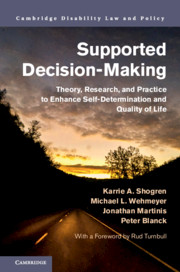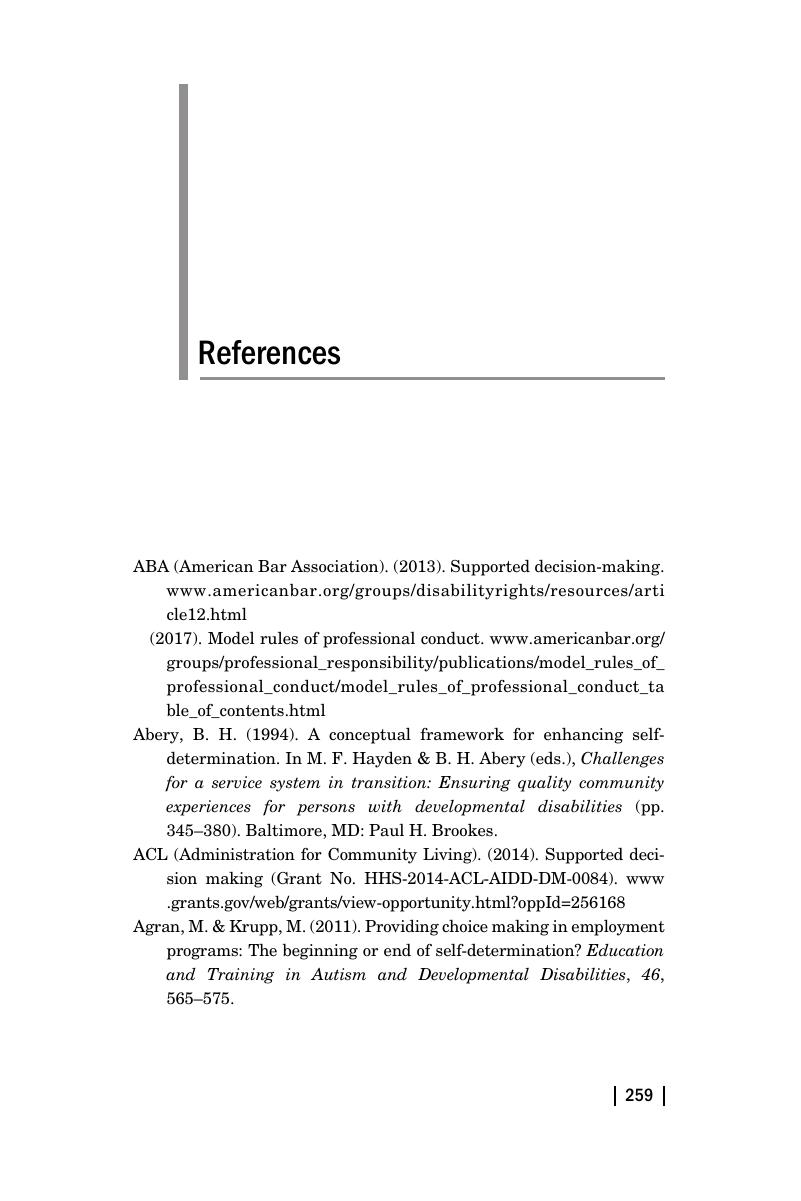 Supported Decision-Making
Supported Decision-Making Book contents
- Supported Decision-Making
- Cambridge Disability Law and Policy Series
- Supported Decision-Making
- Copyright page
- Cambridge University Press, Disability Law and Policy Series
- Contents
- Figure
- Tables
- Foreword
- Acknowledgments
- Part I Overview
- Part II Strengths-Based Frameworks for Understanding Disability and Support Needs
- Part III Theory Underpinning Supported Decision-Making
- Part IV Applications of a Social-Ecological Framework for Supported Decision-Making
- References
- Index
- References
References
Published online by Cambridge University Press: 09 November 2018
- Supported Decision-Making
- Cambridge Disability Law and Policy Series
- Supported Decision-Making
- Copyright page
- Cambridge University Press, Disability Law and Policy Series
- Contents
- Figure
- Tables
- Foreword
- Acknowledgments
- Part I Overview
- Part II Strengths-Based Frameworks for Understanding Disability and Support Needs
- Part III Theory Underpinning Supported Decision-Making
- Part IV Applications of a Social-Ecological Framework for Supported Decision-Making
- References
- Index
- References
Summary

- Type
- Chapter
- Information
- Supported Decision-MakingTheory, Research, and Practice to Enhance Self-Determination and Quality of Life, pp. 259 - 284Publisher: Cambridge University PressPrint publication year: 2018


